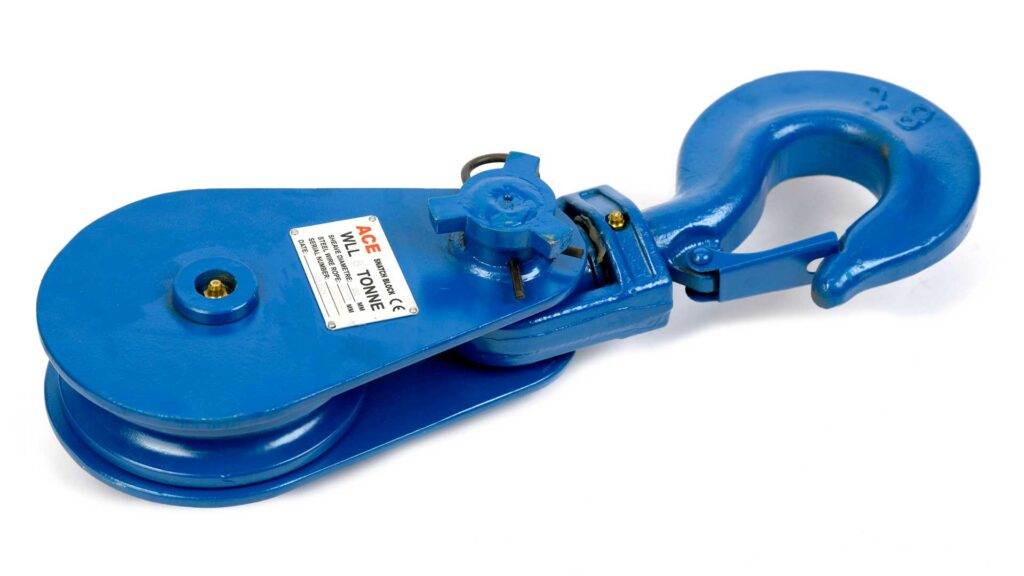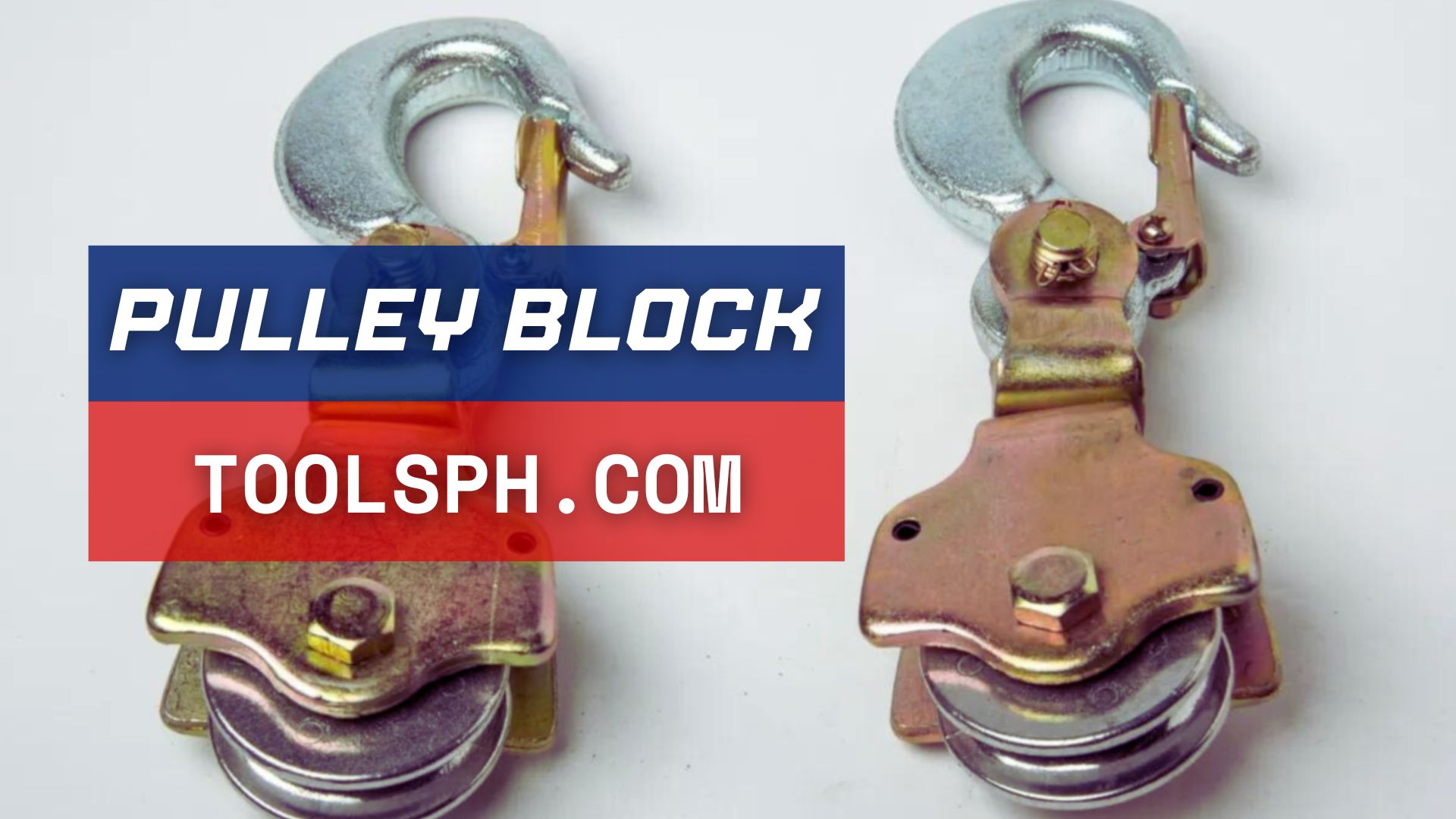A pulley block, sometimes referred to as a block and tackle, is a mechanical configuration made up of one or more pulleys positioned within a frame or housing on a single axle. It’s made to combine several pulleys into one unit, increasing the mechanical advantage of a single pulley system. To lift large objects or apply force over a distance with less effort, pulley blocks are frequently utilized. They are perfect for a variety of applications in construction, maritime operations, rigging, and other industries where heavy lifting is necessary because they are more efficient and versatile than single pulleys.
Pulley Block Prices
Pulley block prices vary depending on its size, capacity, and type. Its price ranges from ₱315.00 to ₱955.35.
| Details | Size | Capacity | Type | Prices |
| Toyu | 2 inches | 0.25 Ton | Single Sheave | ₱315.00 |
| Toyu | 3 inches | 0.5 Ton | Singe Sheave | ₱456.00 |
| Toyu | 4 inches | 1 Ton | Double Sheave | ₱636.90 |
| Toyu | 5 inches | 1.5 Ton | Double Sheave | ₱754.00 |
| Toyu | 6 inches | 2 Ton | Tripod Sheave | ₱955.35 |
| Anton | 6 inches | 0.7 Ton | Single Sheave | ₱865.00 |
| Anton | 7 inches | 1 Ton | SIngle Sheave | ₱945.00 |

Advantages of Pulley Block
Mechanical Advantage – Compared to single-pulley systems, pulley blocks offer a larger mechanical advantage because they combine multiple pulleys into a single unit. This distributes the force over several ropes or belts, which makes lifting heavy loads easier.
Increased Load Capacity – Pulley blocks can lift heavier loads than single-pulley systems due to their mechanical advantage, which makes them appropriate for heavy-lifting jobs requiring a lot of force.
Controlled Movement – Operators can effortlessly and precisely lift, lower, or suspend objects thanks to the controlled movement of loads made possible by pulley blocks.
Durability – Pulley blocks are usually made to be strong enough to bear heavy loads and frequent use, which guarantees their long-term dependability and durability in harsh conditions.
Disadvantages of Pulley Block
Space Requirements – When using multiple pulleys, pulley blocks may require additional space for installation and operation. This may restrict their application in small or confined work spaces.
Potential for Tangles – If there are several ropes or lines used, there is a chance that they will tangle or snag, particularly if they are not handled carefully while in use. This can make lifting more difficult and take more time and effort to fix.
Complexity – Compared to single-pulley systems, pulley blocks can be more difficult to set up and use. To maximize its efficiency, the block and tackle arrangement must be configured correctly and understood.
FAQs
What are the types of pulley blocks?
The configuration of the pulleys and ropes allows for the classification of pulley blocks. There are three common types of pulley blocks: single, double, and triple. Each type has a different mechanical advantage.
What are the advantages of using a pulley block?
With their enhanced mechanical advantage, adaptability, safety, durability, and controlled movement, pulley blocks are a great choice for a range of lifting applications.
Where are pulley blocks used?
Applications and industries for pulley blocks vary and include construction, maritime operations, rigging, material handling, and leisure pursuits like sailing and rock climbing.
How do I choose the right pulley block for my application?
When choosing a pulley block, factors to take into account are the load’s weight, the necessary lifting height, the amount of space available, the surrounding conditions, and the budget. Getting advice from suppliers or experts can help you choose the best pulley block for your requirements.
Are there weight limits for pulley blocks?
Due to various factors like design, construction, and material composition, pulley blocks are rated for particular load capacities. These weight restrictions must be followed to avoid overloading and possible equipment failure.

